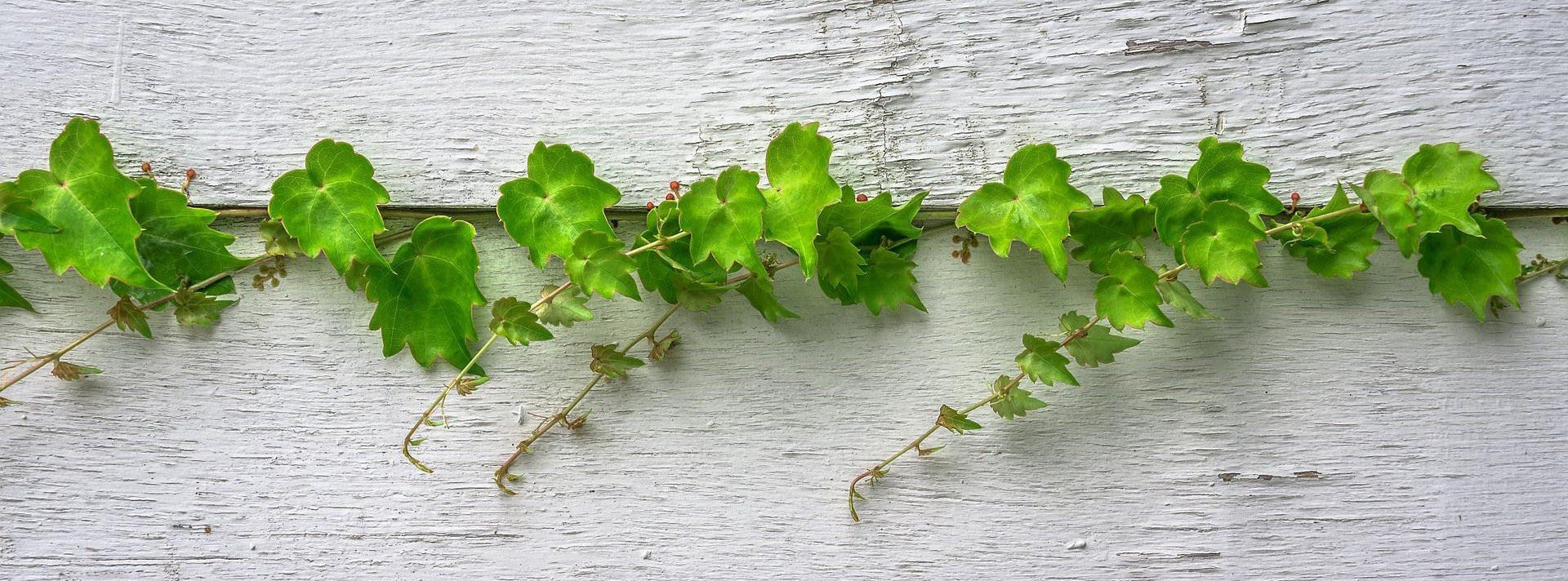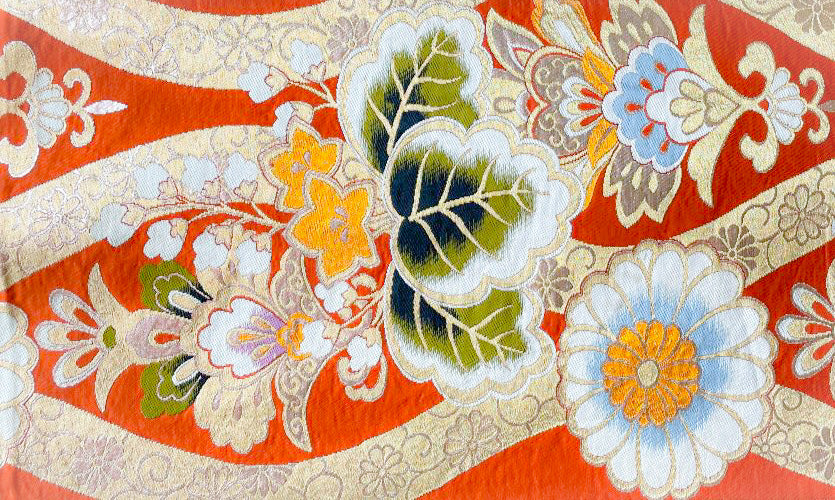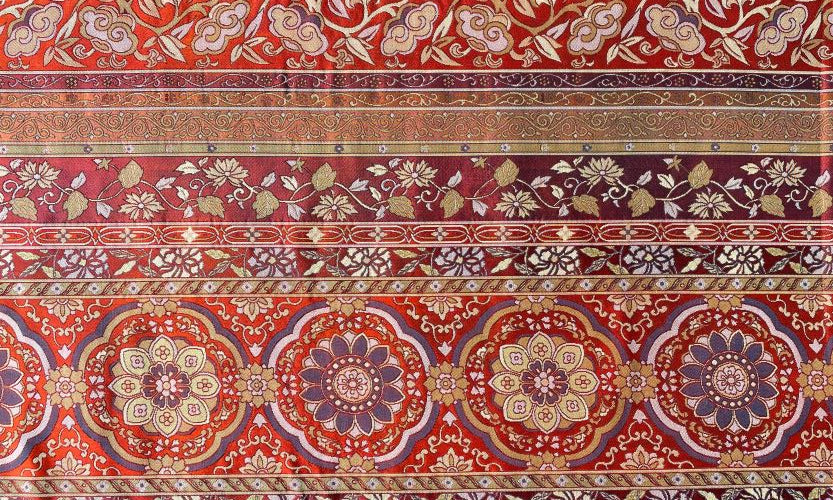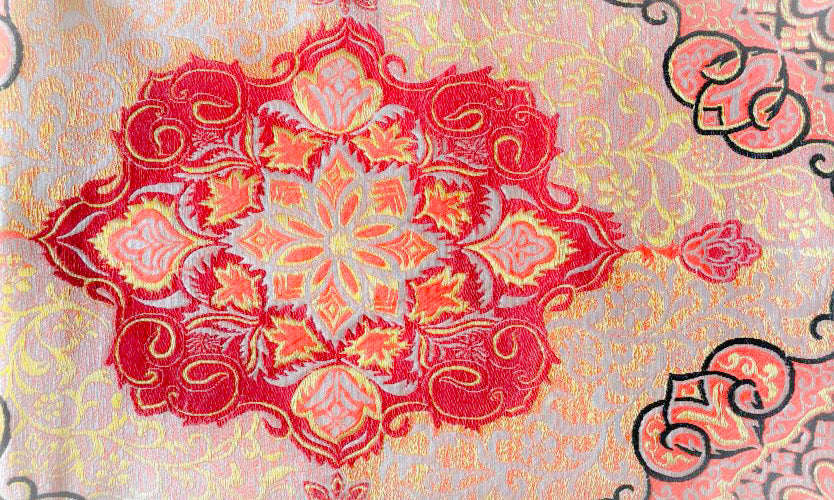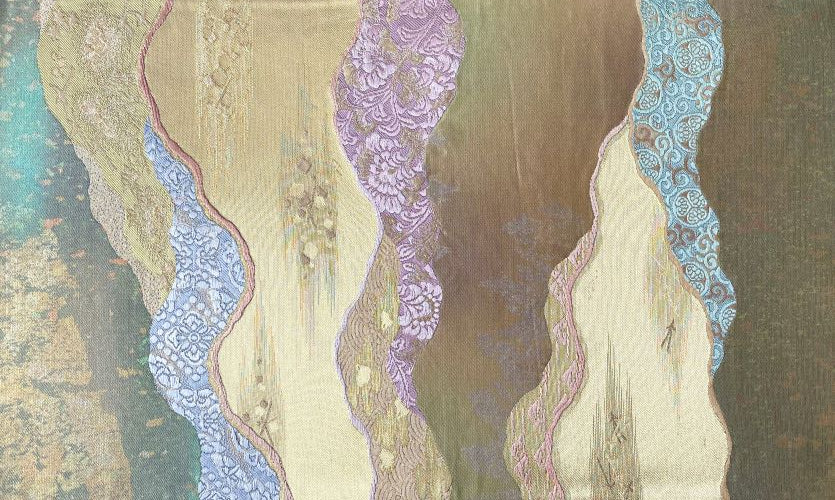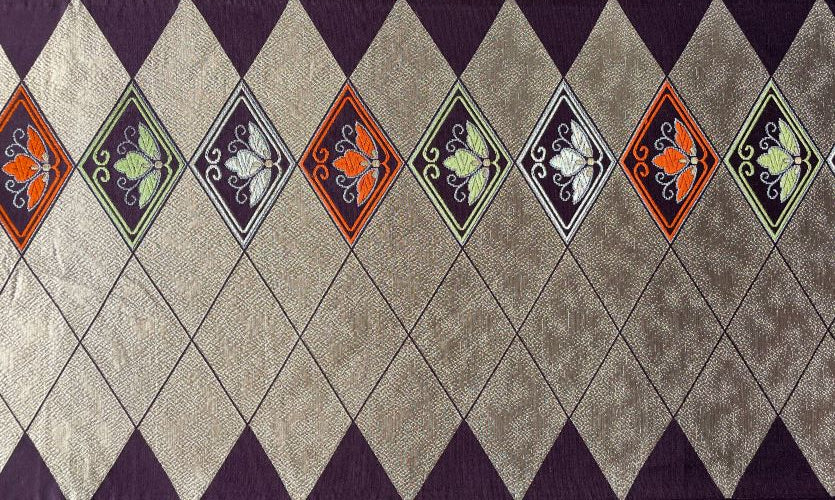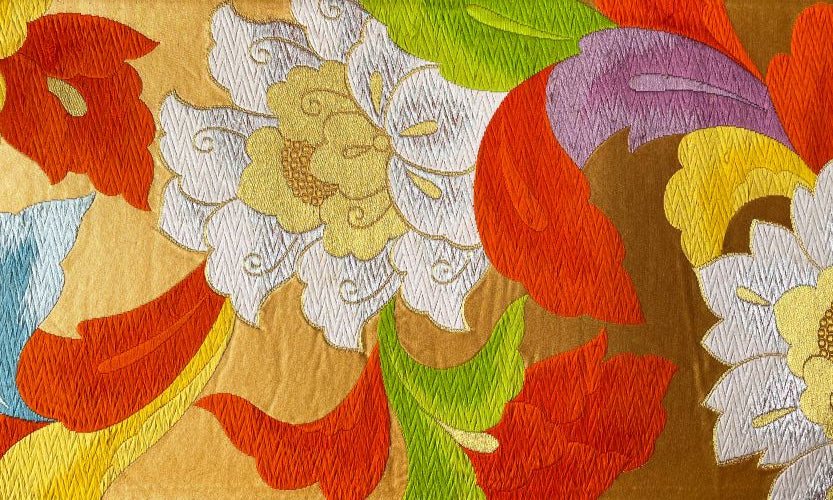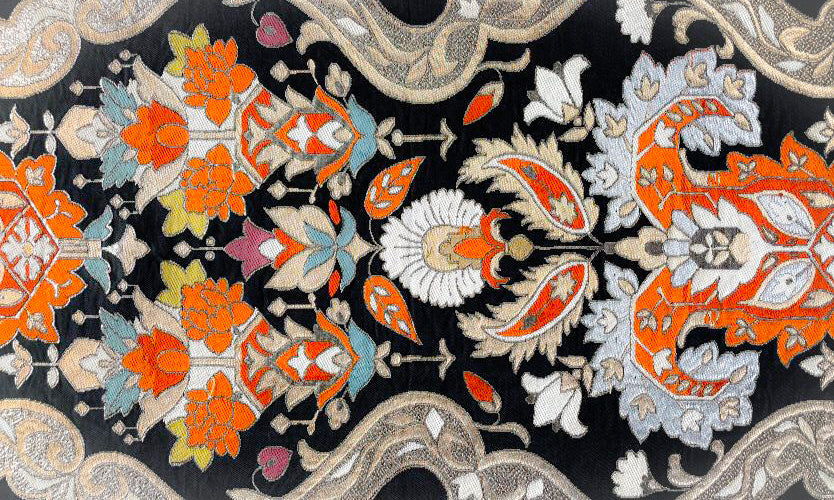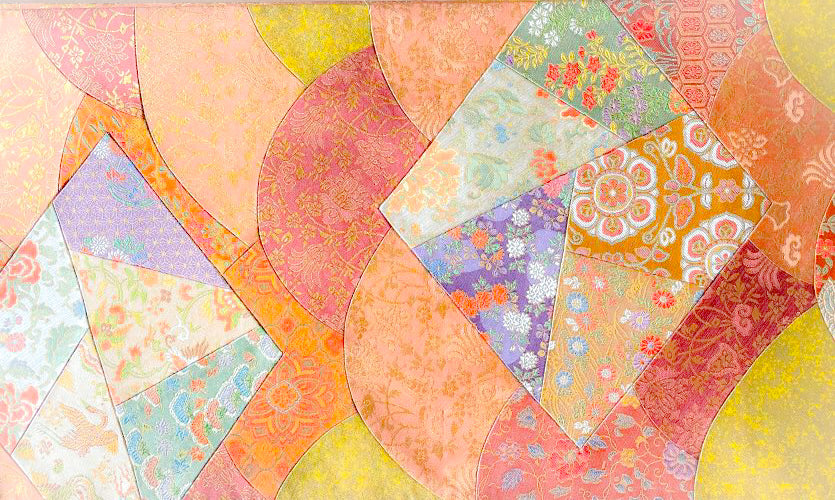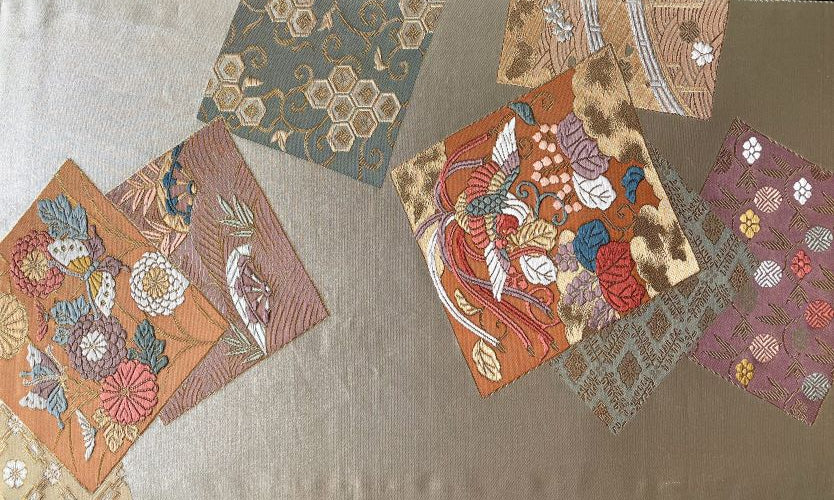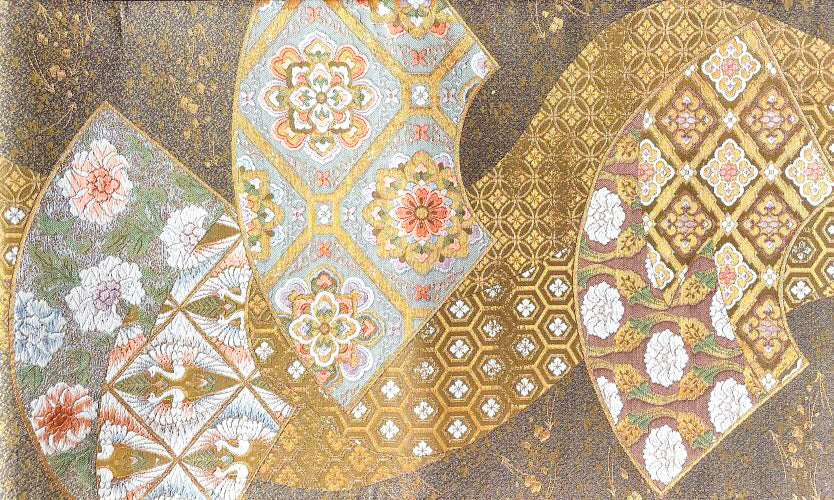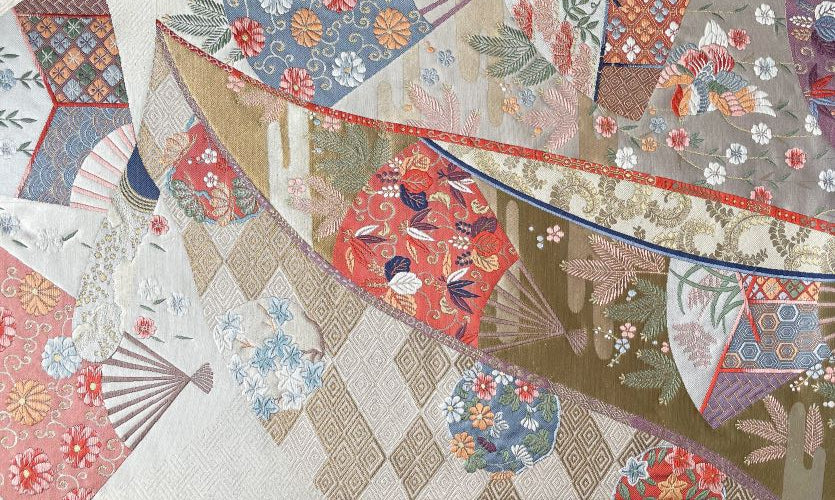唐花 -Chinese flower-
中国から伝えられた花文様であることから、この名がつけられました。空想の花をモチーフとして飛鳥時代から奈良時代にかけて発達し、5弁から8弁にまとめて和風にアレンジされたのが平安時代頃と考えられています。ベースは円形に構成されたものですが、菱形などさまざまな形状で表現されています。
This motif derives its name from its origins as a floral pattern introduced from China. Imaginary flowers served as the inspiration, and the design evolved during the Asuka and Nara periods, with further development in the Heian period when it was adapted into a more Japanese style, combining 5 to 8 petals. The base is typically circular in structure, although various shapes such as diamond patterns have been used in its representation.
唐草 -Chinese plant vines-
日本には古墳時代に中国から伝わったとされていますが、ギリシャやローマの連続文様「パルメット」がルーツという説もあります。地を這うように伸びる蔓が、強い生命力を発揮するとして尊ばれ、松や菊や梅など、蔓を持たない植物にもアレンジされ発展してきました。
This pattern, believed to have been transmitted from China during the Kofun period in Japan, may have its roots in the continuous motif of Greece and Rome known as the "palmette." Esteemed for the symbolism of tenacious life displayed by trailing vines, it has been revered and adapted to include plants like pine, chrysanthemum, and plum, which do not naturally possess vines. The design has evolved and flourished, embodying a diverse array of arrangements and applications.
この文様・和柄が用いられている帯地
Obi fabrics with this Japanese pattern from the obico selection

